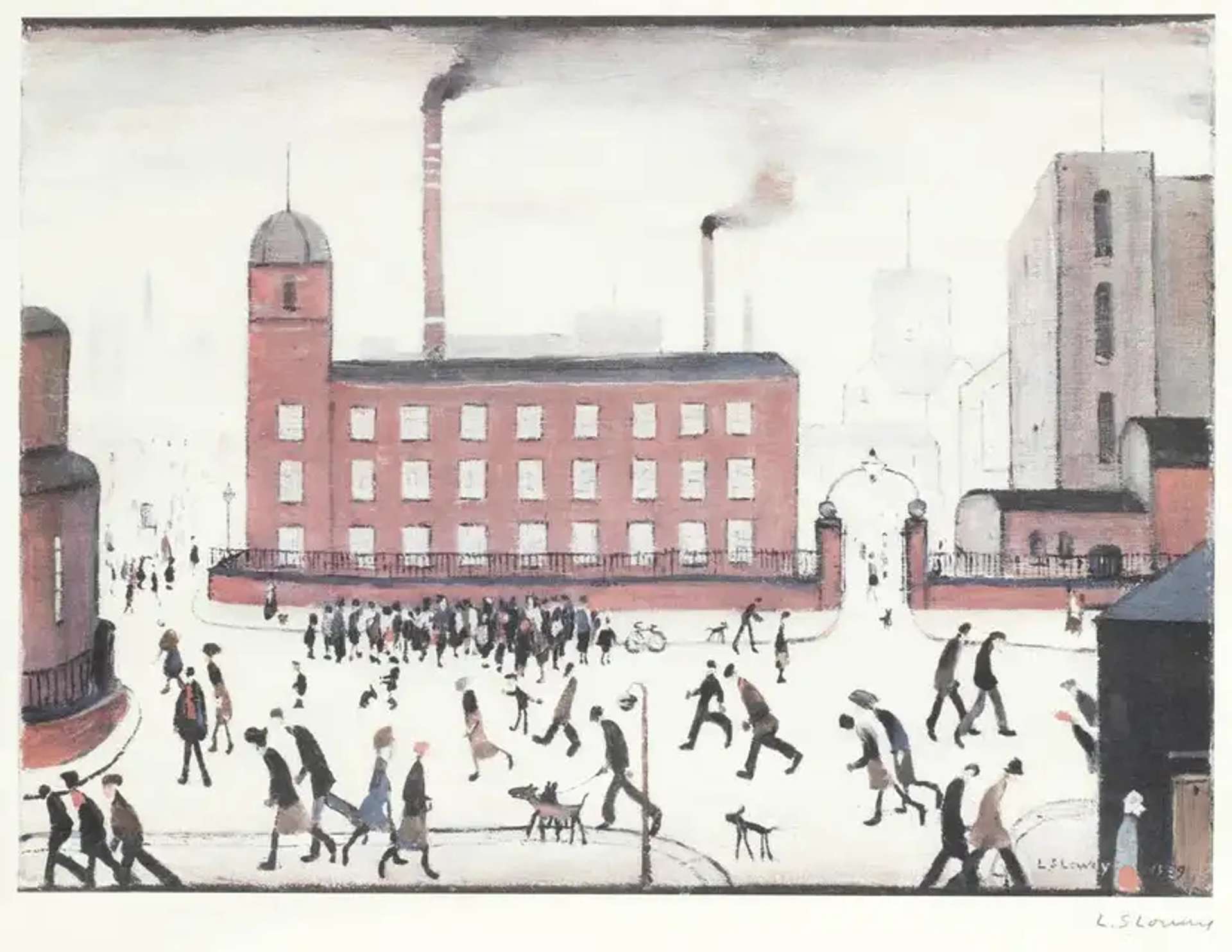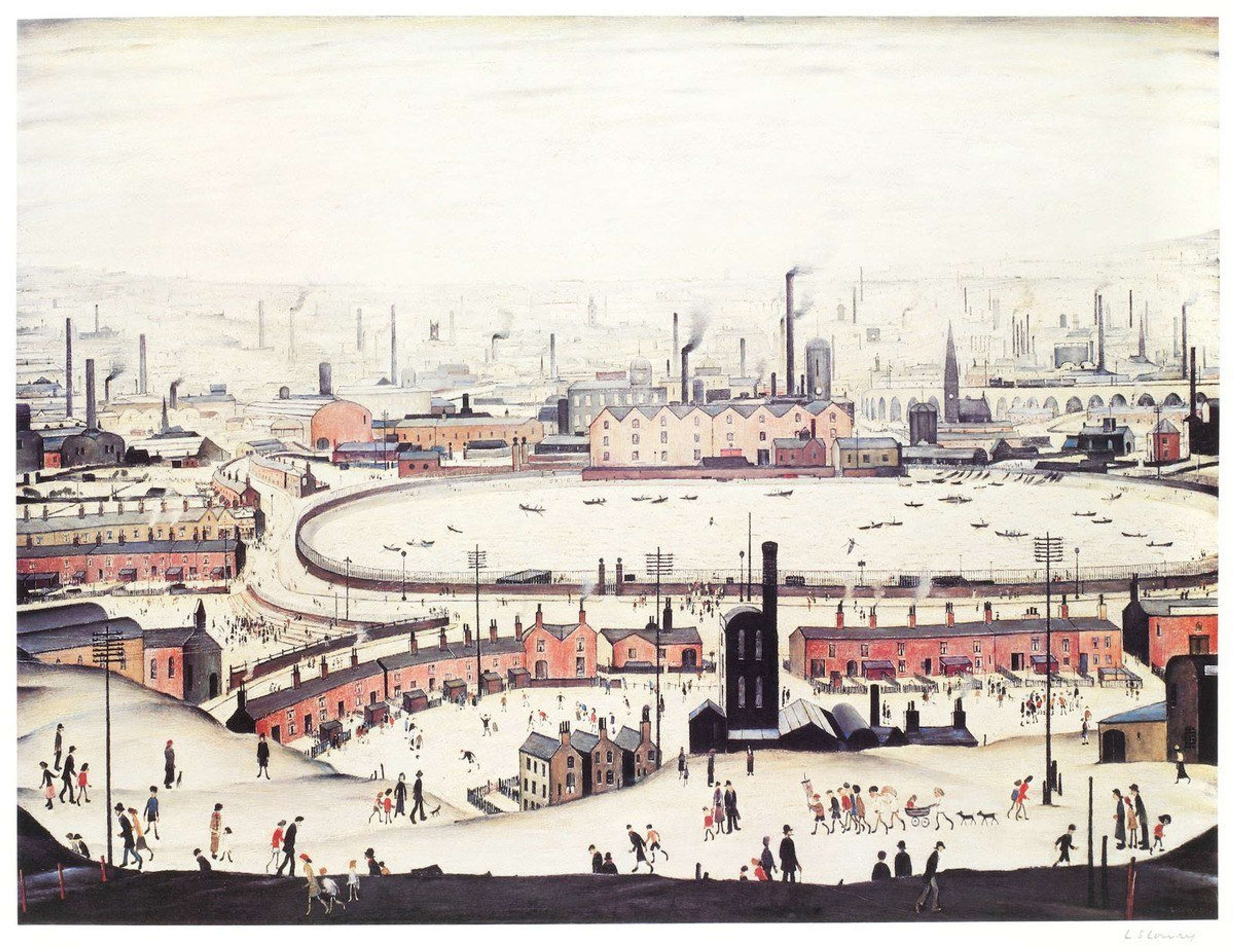The Impact of L. S. Lowry on Contemporary British Art: Examining His Artistic Legacy

 The Fever Van © L.S. Lowry 1971
The Fever Van © L.S. Lowry 1971
L S Lowry
73 works
With his matchstick men roaming amidst the industrial landscapes, Laurence Stephen Lowry's distinctive style has become synonymous with 20th century British art. His art captured a moment in time, reflecting the rapid urbanisation and societal shifts of the period, and especially bringing the experiences of Northerners to the forefront. Once dismissed as a "Sunday painter", his influence extends much beyond mere historical documentation, and he is now praised for his ability to encapsulate the essence of working-class life at this time. Today, as we stand amidst a panorama of diverse British contemporary art, the impact of Lowry’s legacy is undeniably evident. From the subjects artists choose to the narratives they wish to tell and even the colours and brushstrokes they employ, echoes of Lowry resound. Lowry's legacy has also had a profound impact on society, highlighting the importance of preserving and promoting artistic legacies for future generations.
Early Life and Work: Lowry's Background and Early Career
Lowry's early life and work played a pivotal role in shaping his unique artistic style and eventual success as a painter. Born in Stretford, Greater Manchester in 1887, Lowry grew up in a working-class family, with his father working as a clerk for a firm of chartered accountants. At the age of 16, Lowry began working as a clerk himself, a career he would maintain until his retirement in 1952. Lowry had a complex relationship with his parents: his father was a quiet and unobtrusive man, while his mother was incredibly overbearing and consistently expressed disappointment in her son. The relationship between Lowry and his mother was the subject of a 2019 film, Mrs Lowry & Son.
Despite his mother’s admonitions, Lowry's passion for art never wavered, and he began taking evening classes at the Manchester School of Art. It was here that he honed his artistic skills and developed the unique style that would become his trademark, especially after having studied under French Impressionist Pierre Adolphe Valette. He continued his education at the Royal Technical Institute of Salford, a place that would come to feature in many works. While Lowry's early works were often rejected by galleries and he struggled financially for years, his dedication to his craft eventually paid off and he was appointed Official Artist at the coronation of Queen Elizabeth II – who is said to have been a great fan.
Industrial Landscapes: Depicting Northern England in Lowry's Paintings
Lowry is perhaps best known for his industrial landscapes, which depict the gritty, working-class streets of northern England during his lifetime. These works provide a unique and important perspective on the region's manufacturing heritage, capturing the hustle and bustle of industrial life from the towering mills and factories to the bustling streets teeming with workers and residents, and continue to inspire contemporary artists today. Rather than romanticising the working-class life or focusing solely on the stark realities of poverty and hardship, Lowry's paintings are unique in their approach: they represent both the chaos and order of urban life. He is also known for his peculiar style and technique, especially his use of muted tones and the repetition of simple shapes – particularly his renowned "matchstick men". These simple, elongated figures are set against sombre industrial backdrops, speaking to the anonymity and collective nature of ordinary lives in a swiftly mechanising society. Their facelessness emphasises the importance of the collective experience over individual identity. These stylistic choices lend a sense of harmony and rhythm to his work, even in the midst of the busy scenes he portrays.
The richness of Lowry's work, however, extends beyond its aesthetic qualities. His paintings serve as a historical tapestry, chronicling mid-20th-century life and resonating with the stagnation felt by many at a time where the working class seemed ensnared by relentless machinery and persistent poverty. Though the tangible world Lowry depicted has faded—the factories silenced and smokestacks dismantled—his work remains strikingly relevant. It immortalises the challenges endured by everyday individuals during tumultuous times, celebrating both their vulnerability and unwavering resilience. In doing so, Lowry ensures that the silent masses powering industry's might are neither overlooked nor forgotten.
Lowry's influence on Artists and Movements
Lowry's influence on art movements extends beyond his lifetime, with his unique style and subject matter continuing to inspire contemporary artists today. Lowry is often associated with the Northern School, a loosely associated group of artists who depicted life in the industrial north of England in the early 20th century and included the likes of William Turner and Harold Riley. Central to Lowry's work is urban realism, a characteristic that has inspired many artists since. Lowry aimed to capture the essence of urban life and societal evolution, combining reality's grit with artistic abstraction. This focus on the working class and its daily struggles can be seen in the works of contemporary artists such as Paula Rego and Jeremy Deller.
Lowry's Northern focus has also rendered him a beacon for regional artists. Through his dedicated representation of the North's industrial heartlands, he instilled a sense of regional identity and pride, which has inspired countless artists to delve into their local landscapes and tales. Simultaneously, there's an air of naive art about Lowry's works. Despite his formal training, the childlike simplicity and directness in his urban scenes resonate with the ethos of outsider and naive art movements, offering a touchstone for artists positioned on the fringes of mainstream conventions.
Enduring Popularity and Legacy
Lowry's legacy has endured long after his death in 1976, as evidenced by the continued acclaim of his work in contemporary art circles: he consistently ranks among the Top 10 most popular artists, according to YouGov. Lowry's enduring appeal can also be seen in the high prices his works command at auction, with some of his paintings selling for millions of pounds. This has led to a growing interest in his art as an investment, with collectors and investors seeking to acquire his work.
Lowry's iconic matchstick figures have become instantly recognisable, and his ability to capture the essence of daily life in a rapidly changing society continues to resonate with audiences today. His art has also become an important part of popular culture, with his depictions of industrial landscapes and working-class life in northern England being referenced in films, TV shows and even music videos. In 2006, Mancunian band Oasis released a music video for their song The Masterplan, which follows the band in a host of famous Lowry scenes including Man Lying On A Wall and Going To The Match, complete with modern day additions. This allowed Lowry's art to be introduced to a wider generation of enthusiasts, younger and more international than previously seen.
He has been the subject of various retrospectives, including one at the Tate in 2013, but most of his works are housed in a museum named after him: The Lowry in Greater Manchester. Opened in 2000, the arts and culture centre was created to regenerate the area around Salford docks, where Lowry often painted. It now houses over 400 works by the artist, from various points in his career. Lowry's beloved status in the United Kingdom was even more evident in 2022, when there was uproar about one of his works about football going on sale for a record price at Christie’s. Fears that the work would be removed from public view prompted a successful campaign to raise funds to acquire the painting for the general public, illustrating just how significant his contribution has been to the British cultural scene.
Lowry's unique style and subject matter continue to captivate collectors and enthusiasts alike, cementing his place as one of the most important British artists of the 20th century.









